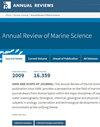Feedbacks Regulating the Salinization of Coastal Landscapes
IF 18.9
1区 地球科学
Q1 GEOCHEMISTRY & GEOPHYSICS
引用次数: 0
Abstract
The impact of saltwater intrusion on coastal forests and farmland is typically understood as sea-level-driven inundation of a static terrestrial landscape, where ecosystems neither adapt to nor influence saltwater intrusion. Yet recent observations of tree mortality and reduced crop yields have inspired new process-based research into the hydrologic, geomorphic, biotic, and anthropogenic mechanisms involved. We review several negative feedbacks that help stabilize ecosystems in the early stages of salinity stress (e.g., reduced water use and resource competition in surviving trees, soil accretion, and farmland management). However, processes that reduce salinity are often accompanied by increases in hypoxia and other changes that may amplify saltwater intrusion and vegetation shifts after a threshold is exceeded (e.g., subsidence following tree root mortality). This conceptual framework helps explain observed rates of vegetation change that are less than predicted for a static landscape while recognizing the inevitability of large-scale change.调节沿海景观盐碱化的反馈作用
盐水入侵对沿海森林和农田的影响通常被理解为海平面对静态陆地景观的淹没,生态系统既不适应也不影响盐水入侵。然而,最近对树木死亡和农作物减产的观测结果激发了人们对相关的水文、地貌、生物和人为机制进行新的基于过程的研究。我们回顾了有助于在盐度胁迫早期阶段稳定生态系统的几种负反馈(例如,存活树木减少用水和资源竞争、土壤增生和农田管理)。然而,降低盐度的过程往往伴随着缺氧和其他变化的增加,这些变化可能会在超过阈值后加剧盐水入侵和植被变化(例如,树根死亡后的沉降)。这一概念框架有助于解释观测到的植被变化率低于静态景观的预测值,同时也认识到大规模变化的必然性。
本文章由计算机程序翻译,如有差异,请以英文原文为准。
求助全文
约1分钟内获得全文
求助全文
来源期刊

Annual Review of Marine Science
地学-地球化学与地球物理
CiteScore
33.60
自引率
0.60%
发文量
40
期刊介绍:
The Annual Review of Marine Science, published since 2009, offers a comprehensive overview of the field. It covers various disciplines, including coastal and blue water oceanography (biological, chemical, geological, and physical), ecology, conservation, and technological advancements related to the marine environment. The journal's transition from gated to open access through Annual Reviews' Subscribe to Open program ensures that all articles are available under a CC BY license, promoting wider accessibility and dissemination of knowledge.
 求助内容:
求助内容: 应助结果提醒方式:
应助结果提醒方式:


